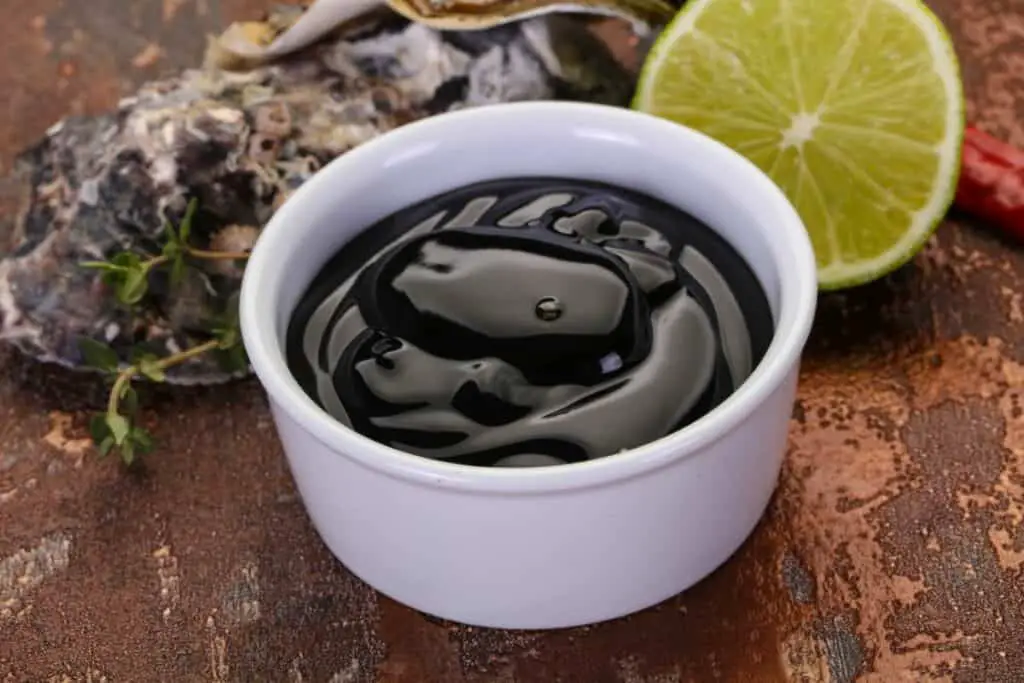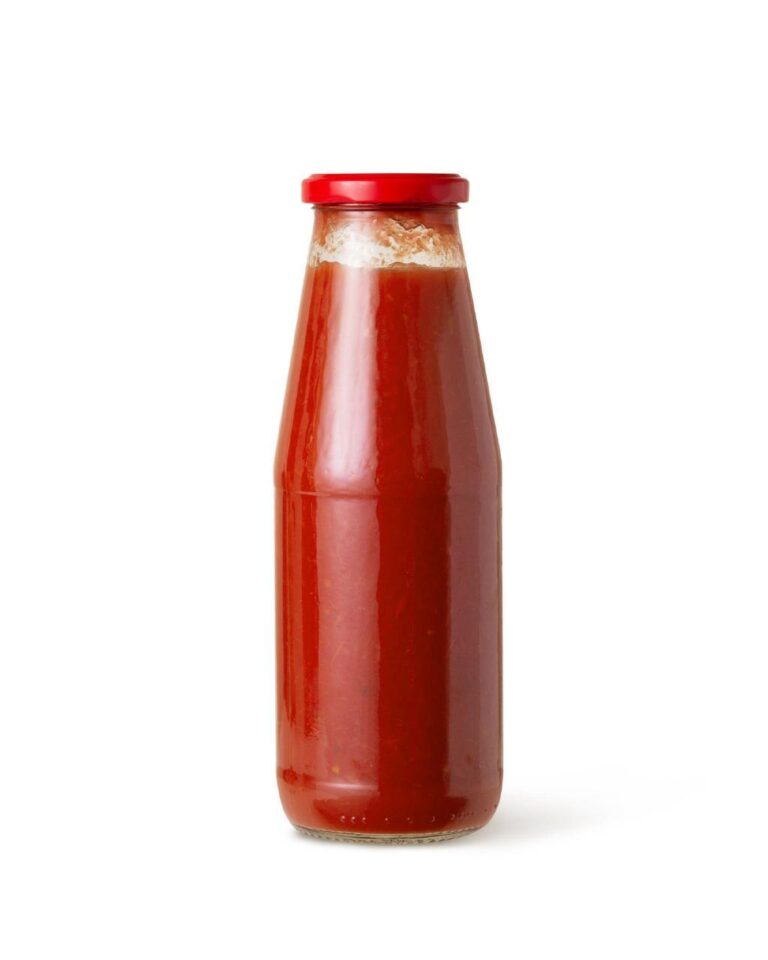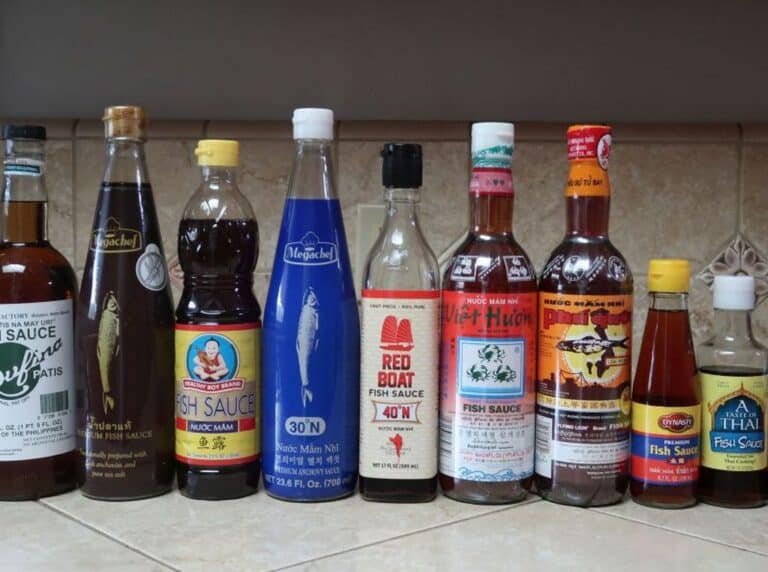Eel Sauce vs Oyster Sauce: What’s the Difference?

Picture yourself savoring a delectable sushi roll drizzled with a rich, sweet eel sauce. Maybe you are indulging in a stir-fry bursting with the umami complexity of oyster sauce. But what sets these sauces apart? What makes eel sauce unique from its counterpart, oyster sauce?
Are you ready to embark on a culinary adventure that will tantalize your taste buds and transport you to the vibrant world of Asian cuisine? In this article, we’ll explore two sensational sauces that add a burst of flavor to your dishes: eel sauce and oyster sauce.
Join us as we unravel the mysteries and delve into the origins, ingredients, flavors, and culinary uses of these incredible sauces. So grab your chopsticks and prepare to discover the captivating differences between eel sauce and oyster sauce.
Eel Sauce
Origin and Ingredients
Eel sauce, also known as unagi sauce, originates from Japan. Traditionally, it was created to enhance the flavor of grilled eel, a popular dish in Japanese cuisine. However, its rich, sweet, and savory profile quickly gained popularity, leading to its use in various other dishes.
The main ingredients of eel sauce include soy sauce, mirin (a sweet rice wine), and sugar. Some variations of eel sauce may also include sake or dashi (a Japanese fish stock) for added complexity.
Flavor and Culinary Uses
Eel sauce boasts a delightful balance of sweetness and umami. Its caramelized notes create a rich and savory taste that complements a wide range of dishes.
Apart from being a popular choice for drizzling over grilled eel, eel sauce is also used as a dipping sauce for sushi rolls, sashimi, and tempura. Its versatility extends to stir-fries, fried rice, and noodle dishes, where it adds depth and a touch of sweetness.
Key Characteristics of Eel Sauce
- Sweet and savory flavor
- Sticky consistency
- Caramelized and glossy appearance
Oyster Sauce
Origin and Ingredients
Originating from China, oyster sauce has become a staple in many Asian cuisines. The original method of making it involved simmering oysters in water and extracting their essence. Today, commercial oyster sauces are made by combining oyster extracts with other ingredients.
The key components of oyster sauce include oyster extracts, soy sauce, sugar, salt. Sometimes cornstarch is needed for thickening. The result is a glossy, viscous sauce with a robust umami flavor.
Flavor and Culinary Uses
Oyster sauce is known for its intense umami taste, which adds depth and complexity to dishes. It has a savory, slightly salty profile that enhances the flavors of meats, vegetables, and stir-fries.
Oyster sauce and fish sauce are commonly used in Cantonese cuisine. They are paired well with a variety of ingredients such as beef, chicken, bok choy, and mushrooms. It can be used as a marinade, stir-fry sauce, or even a condiment to add a burst of umami goodness.
Key Characteristics of Oyster Sauce
- Umami-rich flavor
- Smooth and thick texture
- Dark brown color
Differences Between Eel Sauce and Oyster Sauce
| Aspects | Eel Sauce | Oyster Sauce |
| Origin | Japan | China |
| Key Ingredients | Soy sauce, mirin, sugar | Oyster extracts, soy sauce, sugar, salt |
| Flavor | Sweet, savory, caramelized | Umami-rich, slightly salty |
| Consistency | Thick, syrupy | Glossy, viscous |
| Culinary Uses | Grilled eel, sushi rolls, sashimi, tempura, stir-fries, fried rice, noodle dishes | Meats, vegetables, stir-fries, marinades, condiments |
| Main Function | Enhances flavors and adds sweetness | Adds depth and umami complexity to dishes |
While eel sauce and oyster sauce have distinct flavors, they serve different functions in culinary creations. Eel sauce is primarily used to enhance flavors and add a touch of sweetness to dishes. Its caramelized notes and syrupy consistency make it an ideal choice for drizzling over grilled eel, sushi rolls, sashimi, and tempura.
Additionally, eel sauce’s versatility shines through in stir-fries, fried rice, and noodle dishes. It adds depth and a subtle sweetness.
On the other hand, oyster sauce is prized for its umami richness and slightly salty taste. It serves as a flavor enhancer, adding depth and complexity to a wide range of dishes. Oyster sauce pairs exceptionally well with meats, vegetables, and stir-fries, making it a popular choice in Cantonese cuisine. Oyster sauce adds a distinct umami flavor to dishes, whether used as a marinade, stir-fry sauce, or condiment.
Read: Fish Sauce vs. Eel Sauce
In terms of consistency, eel sauce has a thick, syrupy texture, while oyster sauce boasts a glossy and viscous nature. These texture differences can affect how sauces coat and adhere to ingredients, resulting in distinct mouthfeel experiences.
When it comes to the origins of these sauces, eel sauce finds its roots in Japan, where it was initially developed to enhance the flavor of grilled eel. In contrast, oyster sauce originated in China and has since become a staple in various Asian cuisines.
It’s worth noting that, while eel sauce and oyster sauce have distinct flavors, they can be used interchangeably to some extent. Chefs and home cooks alike frequently experiment with these sauces. They incorporate them into recipes to add depth, sweetness, or umami notes, depending on the flavor profile desired.
Making Homemade Sauces Comparison
Homemade Eel Sauce
Making eel sauce at home is a simple process. Here’s a step-by-step guide:
- In a small saucepan, combine equal parts soy sauce and mirin.
- Add sugar to the saucepan, adjusting the amount to achieve your desired sweetness.
- Optionally, put a small amount of rice vinegar for a slightly tangy flavor.
- Place the saucepan over low heat and stir the mixture until the sugar has dissolved completely.
- Simmer the sauce gently for about 5-10 minutes, allowing it to thicken and develop its signature glossy texture.
- Remove the sauce from the heat and let it cool before using or storing it in a sealed container.
Homemade Oyster Sauce
If you prefer homemade oyster sauce, follow these instructions:
- In a saucepan, combine oyster extracts and soy sauce in a 1:1 ratio.
- Add sugar to the mixture, adjusting to taste.
- Optionally, incorporate additional ingredients such as salt, cornstarch, or MSG according to your preference.
- Place the saucepan over low heat and stir the mixture until the sugar and any other added ingredients have dissolved.
- Simmer the sauce gently for a few minutes, allowing it to thicken.
- Remove the sauce from the heat and let it cool before using or storing it.
Culinary Applications

Eel Sauce
Eel sauce is commonly used in Japanese cuisine, particularly in dishes that feature grilled eel. Here are some popular culinary applications of eel sauce:
- Glazing Grilled Eel: Eel sauce is traditionally used to glaze grilled eel, creating a sweet and savory coating that caramelizes beautifully.
- Sushi Rolls: Eel sauce is a common ingredient in sushi rolls, especially those that feature eel as a filling. It adds a burst of flavor and enhances the overall taste of the roll.
- Rice Bowls: Eel sauce can be drizzled over rice bowls, such as Unadon, to provide a delicious and flavorful topping.
- Noodle Dishes: Eel sauce can be added to noodle dishes like yakisoba or udon to elevate their taste and add a touch of sweetness.
Oyster Sauce
Oyster sauce is a versatile condiment that finds its place in a wide range of Asian dishes. Here are some culinary applications of oyster sauce:
- Stir-Fries: Oyster sauce is commonly used in stir-fries, adding a savory and umami flavor to vegetables, meat, or seafood.
- Noodle Stir-Fries: Oyster sauce can be incorporated into noodle stir-fries, such as chow mein or pad Thai, to give them a rich and savory taste.
- Vegetarian Dishes: Oyster sauce can be used in vegetarian dishes as a flavorful substitute for meat-based sauces. It adds depth of flavor to tofu, mushrooms, or stir-fried vegetables.
- Marinades: Oyster sauce can be used as a base for marinades, particularly for meats like beef or chicken, infusing them with a savory and tangy taste.
Health Considerations
Eel Sauce
It’s important to consider eel sauce’s nutritional value and allergens when cooking with it. Here are some health considerations:
- Sodium Content: Eel sauce, like soy sauce, is relatively high in sodium. Individuals on low-sodium diets or with hypertension should consume it in moderation.
- Allergens: Eel sauce contains soy, which is a common allergen. People with soy allergies should avoid or seek alternatives to eel sauce.
Oyster Sauce
Oyster sauce also has its own health considerations. Here’s what you should keep in mind:
- Sodium Content: Oyster sauce is moderately high in sodium, so it should be consumed in moderation. This should be a concern for individuals with sodium-sensitive conditions.
- Allergens: Oyster sauce contains oyster extracts, making it unsuitable for those with shellfish allergies. Alternative sauces should be used in such cases.
Conclusion
In conclusion, eel sauce and oyster sauce are two remarkable Asian sauces with their own unique qualities. Eel sauce is sweet, savory, and caramelized, while oyster sauce is intensely umami.
Understanding their differences allows you to make informed culinary choices, whether you’re looking for sweetness or savory complexity. So go ahead, embrace the flavors of eel sauce and oyster sauce, and elevate your dishes to new heights of deliciousness!






